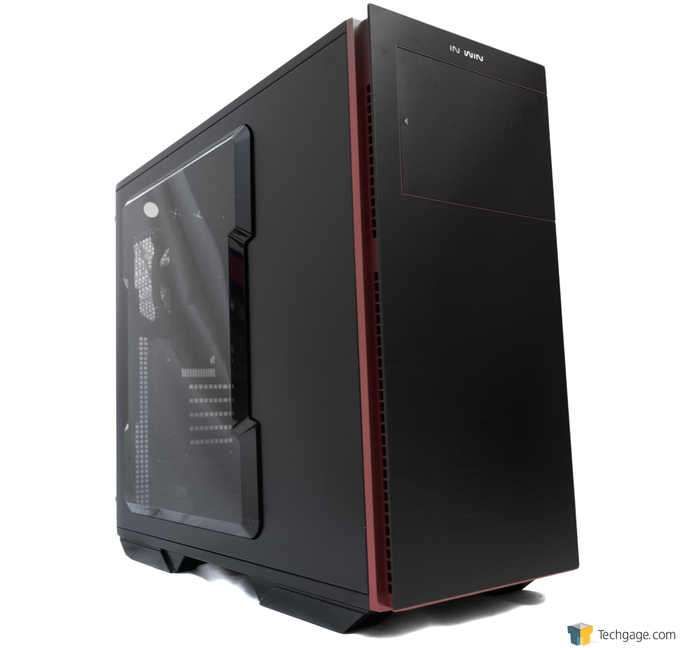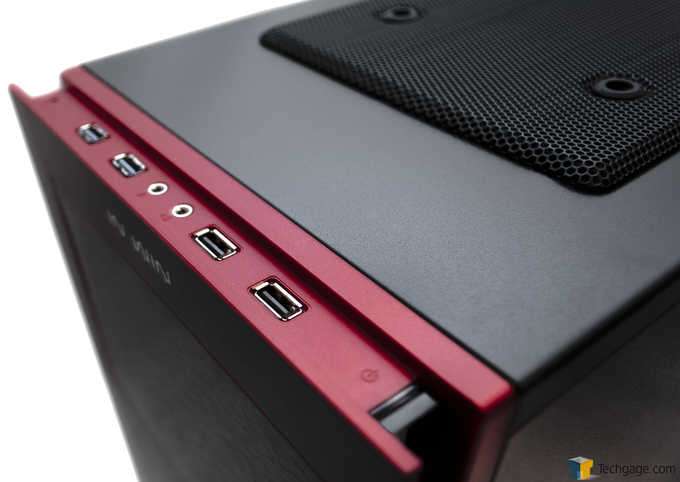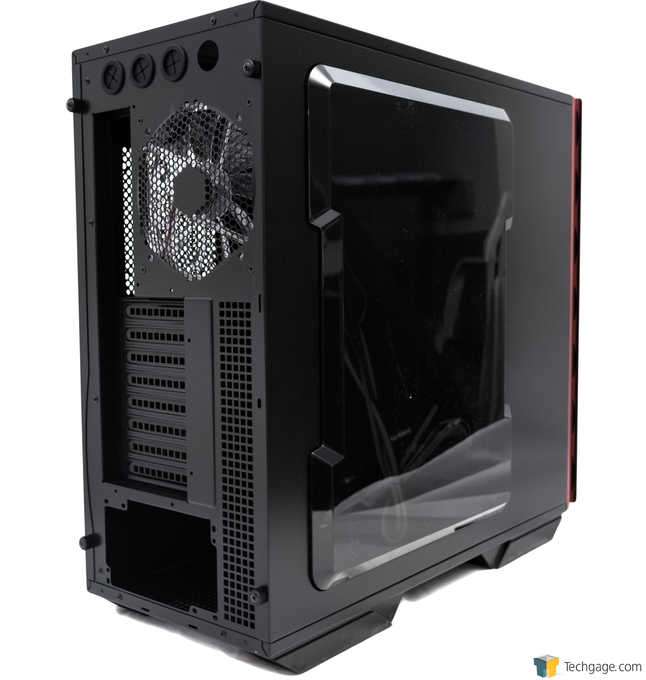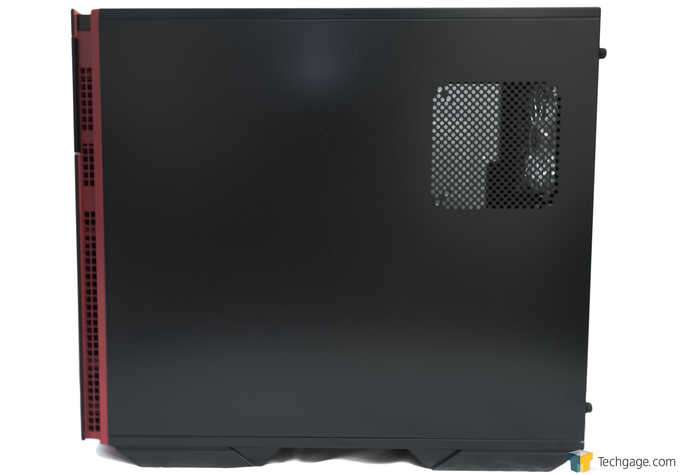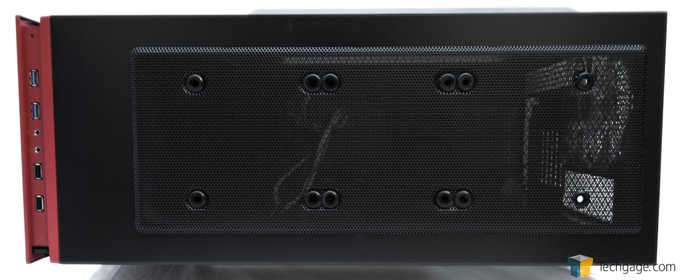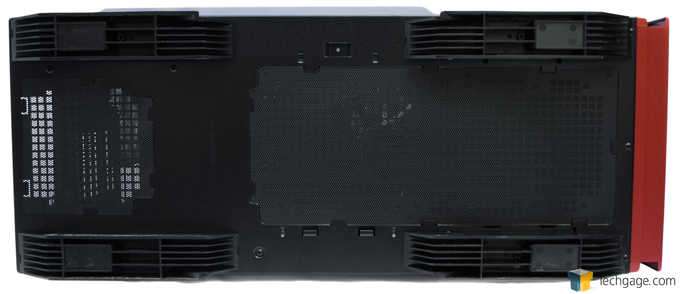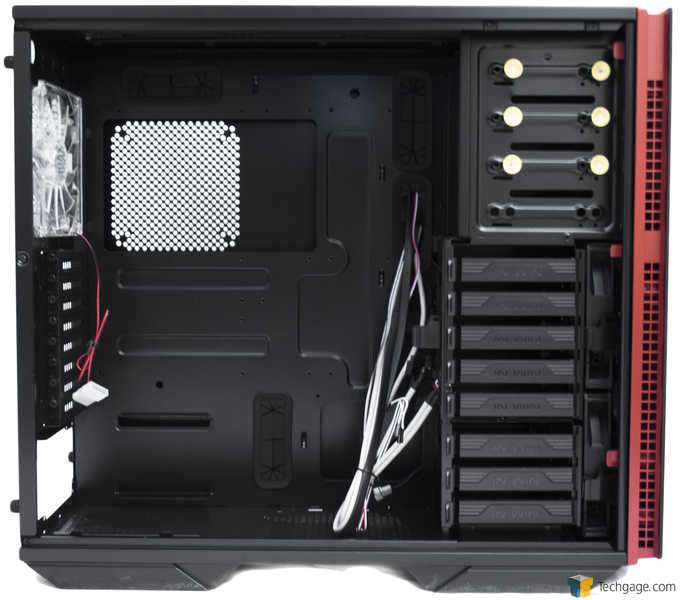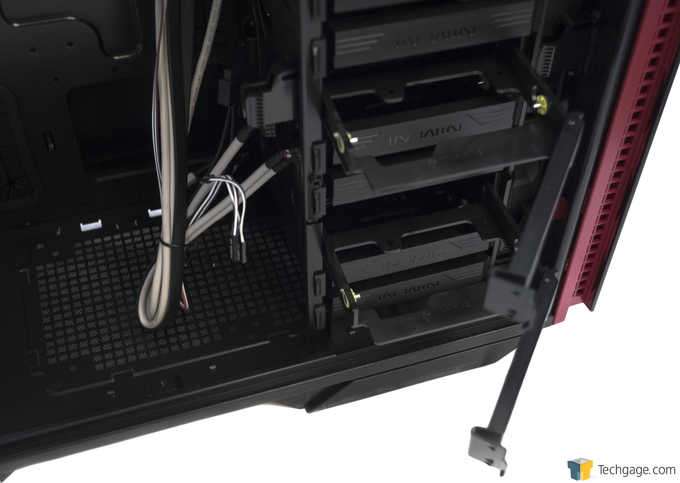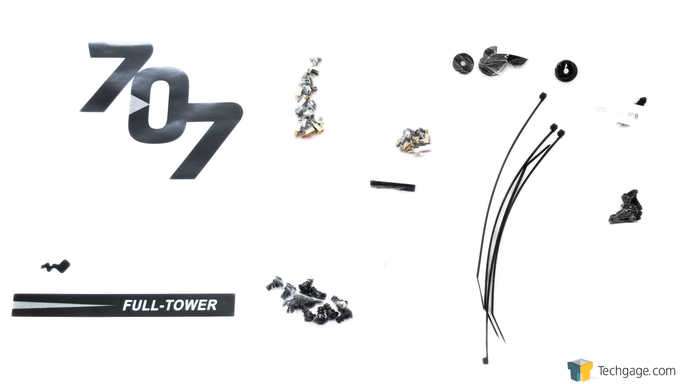- Qualcomm Launches Snapdragon 4 Gen 2 Mobile Platform
- AMD Launches Ryzen PRO 7000 Series Mobile & Desktop Platform
- Intel Launches Sleek Single-Slot Arc Pro A60 Workstation Graphics Card
- NVIDIA Announces Latest Ada Lovelace Additions: GeForce RTX 4060 Ti & RTX 4060
- Maxon Redshift With AMD Radeon GPU Rendering Support Now Available
Sleek, Stylish, If Slightly Strange – A Review Of The In Win 707 Full-Tower Chassis

In Win may not be as well-known as many of its competitors in the PC chassis market, but it makes some eye-catching products. Its 707 is certainly one of those. Styling-wise, it’s a knockout. But the beauty of a PC chassis is more than just skin-deep. Join us as we get inside the In Win 707 and put it through the Techgage wringer.
Page 1 – Introduction
Come on, admit it.
You’re a sucker for style.
It’s okay. I am, too. And I think everybody is as well.
As much as I hate making assumptions, I’ll make this one: Deep down, we all love beauty. I’d even say that, given a choice between two things that are equally capable, we’d all pick the one we think is more beautiful than the other. No matter which of our senses get engaged, we will choose that which pleases our senses the most.
Choosing a chassis for your PC follows these same rules, I think. At any given price point, I think we’d all choose the one that best pleases our own definitions of beauty.
It’s a very good thing that consumers are spoiled for choice these days.
And In Win, not typically known as a Titan in the PC chassis market, wants to spoil us even more.
In Win’s full-tower 707 gaming chassis, I have to say, is one of the most stylish PC chassis I’ve seen. It looks very modern, with clean lines and just the right amount of pizzazz. The company sent us a beautiful black example, trimmed with exquisite red accents. The 707 is also available in silver/white with black trim.
Our black review sample certainly makes a great first impression. For one thing, black and red are about as aggressive a color combination as you can have. Since the company designates this as a gaming PC chassis, it’s only appropriate to use such a color scheme. The subtle asymmetry of the 707’s details – the single door covering the optical drives’ red accents draw an incomplete parallelogram – heightens visual interest as well. The extruded window on the left side panel, with its neat raised beveled edges, contrasts with the flat yet vented right side panel.
The theme of subtle asymmetry continues with the 707’s front I/O ports, all of which sit in a recessed red trench that separates the front fascia from the main body of the chassis. The power button, for instance, is isolated on the top-right edge of the trench. The rest of the I/O ports – a pair of USB 2.0, the 3.5mm mic in and headphone out, and a pair of USB 3.0 – sit neatly in a line and are centered along the trench, which defies the theme of asymmetry. The theme, though, is expressed anew when you see the tiny hard drive activity LED sitting by its lonesome on the top left edge.
Since we’re talking about the front of the chassis, it’s appropriate to mention that on both sides of the trench are arrays of intake vents that feed the pair of 140mm fans. These fans, by the way, have both male and female 3-pin connectors at the end of their cables. I don’t recall ever seeing chassis fans having both types of power connectors in any chassis I’ve reviewed yet.
This shot shows off the rear and the left side panel. The window – smoke-tinted! – is the most prominent feature of this view. Also noteworthy are the eight PCI expansion slots, the 140mm exhaust fan, and the quartet of grommets covering up openings for externally-mounted radiator tubing. To the right of the expansion slot area is also an exhaust vent. Finally, you can see the bottom-mounted PSU area.
Here’s a look at the other side panel. The aforementioned vent is positioned in the vicinity of most motherboards’ CPU socket area. I suppose the theory behind this feature is to improve CPU temperatures. This profile view also gives you a clearer look at the intake vents at the front of the chassis.
The 707’s roof is mostly a mesh panel allowing for optimum ventilation. Even here the design theme of subtle asymmetry exists: The mesh panel has fan mounts for up to three 120mm fans, and these fan mounts are shifted over to the mesh panel’s right side. In most cases (pun not intended), roof-mounted fans are centered along a chassis’ spine. Lining the inside of the roof mesh is a finer, more restrictive mesh that serves as a dust filter.
The chassis’ floor is fairly nondescript. There are four large feet as well as two mesh panels for ventilation purposes.
And here’s a look at the interior of the 707. All of the surfaces are painted with a textured black coating; incidentally, the chassis’ exterior also wears the same type of paint. This allows the black grommets covering the well-positioned cable management openings to blend in. It’s therefore strange to see the I/O cables dressed in beige or left naked, exposing the red, white, and blue wires. The fan cables are likewise left undressed. The neon yellow optical disk drive retention mechanisms are also odd given the all-black interior.
It’s interesting to note the 140mm exhaust fan has a Molex power connector. I don’t remember the last time I saw a stock rear exhaust fan with a Molex power connector; I think it’s very strange for In Win to break chassis design convention with this detail.
Also, note that none of the motherboard standoffs come pre-installed. This detail strikes me now as a bit old-fashioned and inconvenient, given that the very best chassis these days have at least the central key standoff come pre-installed. At least In Win was good enough to provide a standoff driver nut, which makes standoff installation a breeze.
A word of warning, though, especially for inexperienced system builders: The 707 is compatible with ATX, mATX, and E-ATX motherboards, so accordingly the motherboard tray has standoff holes for these types of system boards. Be sure you install the standoffs only where your particular motherboard has mounting holes. Installing “extra” standoffs where your system board doesn’t have holes for them might cause a short-circuit, which will cause your PC to fail at power-on.
The storage retention system is functional, if not particularly innovative. The system is tool-less for 3.5″ HDDs; simply place the device inside the sled in between the retainers, then slide the sled into its place in the cage. For 2.5″ devices, though, you need to use screws to hold them in place in the sled. The 707 does not come with SSD-specific retention systems as many modern chassis do these days.
Note that it is possible to remove the bottom storage cage (which encompasses three storage devices) to create space for, say, a bottom-mounted radiator.
And speaking of radiators, you can mount them in three spots in this chassis: The aforementioned floor (2 x 120mm or 2 x 140mm max), the rear exhaust fan mount (140mm only), and the chassis roof (3 x 120mm max).
We’ll end our tour with a look at the 707’s accessories package. It’s more or less typical: A complement of various types of screws for your system as well as some zip-ties for cable management and a fold-out user’s manual. In Win also supplies a pair of rubber pads intended to support longer PSUs, which is a nice touch.
Now that we’ve had a good look at the 707, let’s install our test system into it and see how well it works.
Support our efforts! With ad revenue at an all-time low for written websites, we're relying more than ever on reader support to help us continue putting so much effort into this type of content. You can support us by becoming a Patron, or by using our Amazon shopping affiliate links listed through our articles. Thanks for your support!




